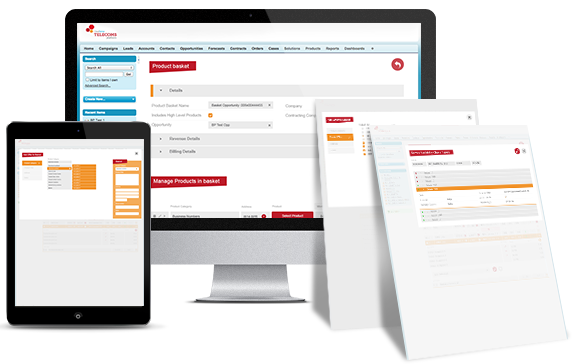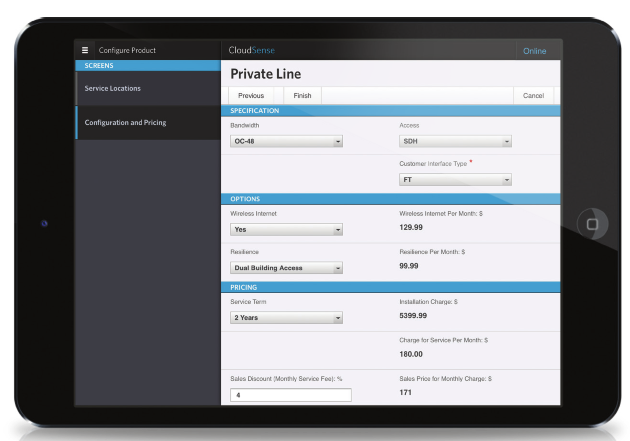Communications services providers (CSPs) are finding their existing IT architecture more of a liability than a legacy. Often, it consists of a complicated mix of self-built point solutions that are poorly integrated, or single vendor stacks that are expensive to manage and slow to change.
It’s no surprise then, said CloudSense CEO Richard Britton, that in many cases, the complexity, costs and the cumbersome nature of their systems are impacting customer experience and holding the company back – just at a time when they need to become more competitive, take control and to grow into new markets.
The rise of omnichannel sales has highlighted these deficiencies – and in particular how intricate, silo-based systems and a lack of integration between the front and back office make it difficult to build ongoing knowledgeable and profitable customer relationships. Likewise it can delay time to market for new products and so obstruct potential new revenue streams.
This is emphasising a growing gap between legacy IT strategy and the rest of the business. The IT team, for example, might want to focus on standardising certain applications to ease integration and for cost and security reasons. But with revenues from traditional services at a standstill, most communications providers have a pressing need to innovate and move into new markets.
 These clashing priorities inevitably lead to a strategic misalignment. To the point where, in a recent CloudSense survey, 79% of communications providers said their systems were a barrier when selling products and services and 82% couldn’t easily sell bundles across all products and services.
These clashing priorities inevitably lead to a strategic misalignment. To the point where, in a recent CloudSense survey, 79% of communications providers said their systems were a barrier when selling products and services and 82% couldn’t easily sell bundles across all products and services.
So the mismatch clearly needs to be addressed as a matter of urgency and in a way that accommodates the needs of all sides of the business. It comes down to an architecture that incorporates layers of applications so that technology can facilitate innovation, differentiation and new transformational processes, built on the IT department’s foundation of security and efficiency.
This architecture is becoming known as ‘pace layering’ with applications divided into:
- Systems of Record – These are the foundational applications. Stable and changed infrequently (typically at an operational tempo of 5-15 years), they facilitate core business processes.
- Systems of Differentiation – These applications are continuously evolving with frequent upgrades (generally at a timeframe of 2-5 years). Typically, they cover business interactions such as Configure, Price, Quote (CPQ) and order management.
- Systems of Innovation – These applications enable agile experimentation and rapid prototyping – the key to failing fast and trying again until a successful proposition is reached. The operational tempo of change is fast-paced (typically in a time-frame of months to two years).
Pace layering in this way provides a place in the architecture for the latest easy-to-use applications that can be quickly deployed and solve a specific challenge or respond to a market opportunity. But it also demands a more granular approach to modular, enterprise systems, categorising them according to the characteristics of each application.
Flexible and modular
So how does this work in practice? And what type of application must communications providers consider to optimise this layering approach and achieve the agility they so urgently need?
Omnichannel commerce platforms are increasingly replacing limited Configure Price Quote (CPQ) methods with a broader and more responsive functionality and providing the ‘differentiation’ and ‘innovation’ layers of the architectural stack, according to the modules deployed.
These platforms are particularly key to the communications industry as they incorporate a series of modules that help overcome the current barriers to selling, while at the same time improving the customer experience. They begin by providing conventional CPQ capability but across all products and services including fixed, mobile, broadband, WAN, hosting, VoIP and digital apps in a single quote.
But they go beyond conventional CPQ to reduce the time taken to launch new products and bundle up- and cross-sell promotions, especially those that are run across multiple channels. Legacy systems make it difficult to make changes without involving the IT department. However, if new product information is held in a single, central catalogue, this can be easily expanded or changed at any time without specialist knowledge, enabling a fast and fluid response to market changes and customer demand.
The catalogue needs to be governed by a series of business rules that guide staff, whether they are at a desk, contact centre or using mobiles or tablets out in the field. By managing any moves, adds, changes, deletions (MACD) challenges and providing valid quotes, it minimises delays through an extended approval chain. Using this, the team has the flexibility to configure and combine different products based on an individual customer, without the company losing overall control.
But customers aren’t interested in these challenges, only that any interaction with their provider is as straightforward and pain-free as possible. However, this can be difficult now that they demand global, round-the-clock and transparent service every time. Consumer expectations have been shaped by companies such as Apple and Amazon, which can identify customers at all stages of the buying cycle, know their purchasing patterns and can tailor a product to match. Customers now expect that same intuitive selling, whatever they are buying, regardless of how and when they are buying it.
Omnichannel commerce couples its transaction lifecycle functionality with CRM and a 360-degree customer view held in a centralised, single location for consistency across channels and throughout each customer contact to enable this knowledge. A sale is then managed through to fulfilment, billing and the collection of cash as the platform can be easily integrated with eSignature and billing systems.
Of course, with customers increasingly enabled with the latest mobile devices and demanding ‘anytime, anywhere, anyhow’ interaction and engagement, self-service also has to be a key part of the mix. Customers need to have the option to build their own bundle, buy across any channel and manage their own accounts online.
Simplifying implementation and maintenance
There’s no doubt that the need to deliver this level of enhanced agility to the customer is becoming ever more urgent. Cloud-based platforms such as this can sit as a top layer of architecture and continuously evolve as
market pressures change.
As with all cloud-based technology, the platforms are also highly scalable and can be easily and quickly rolled out across additional business units and geographical markets. Flexibility is the keynote of the software-as-a-service (SaaS) approach. These platforms are able to support multi-tenant configurations and a best-of-breed, iterative approach to implementation. They are accessible from anywhere and can therefore leverage the latest mobile technology. Moreover, unlike on-premises solutions, all upgrades and maintenance are handled by the provider.
It’s time that a communications provider’s architecture stopped being a hindrance to success. A re-design could end the downward spiral of wasted opportunities including failed orders, inconsistent and long fulfilment times and the disconnect between what’s promised and what’s delivered.
The author of this blog is Richard Britton, CEO at CloudSense.
Comment on this article below or via Twitter: @ VanillaPlus OR @jcvplus






